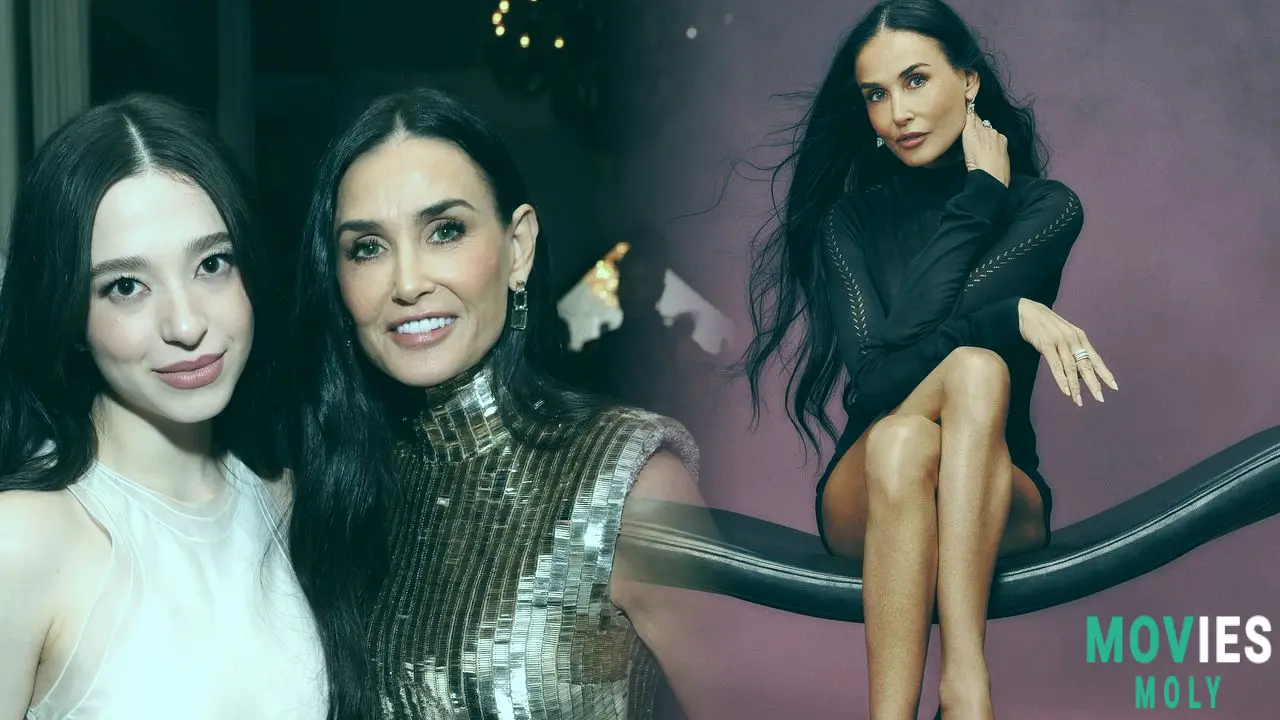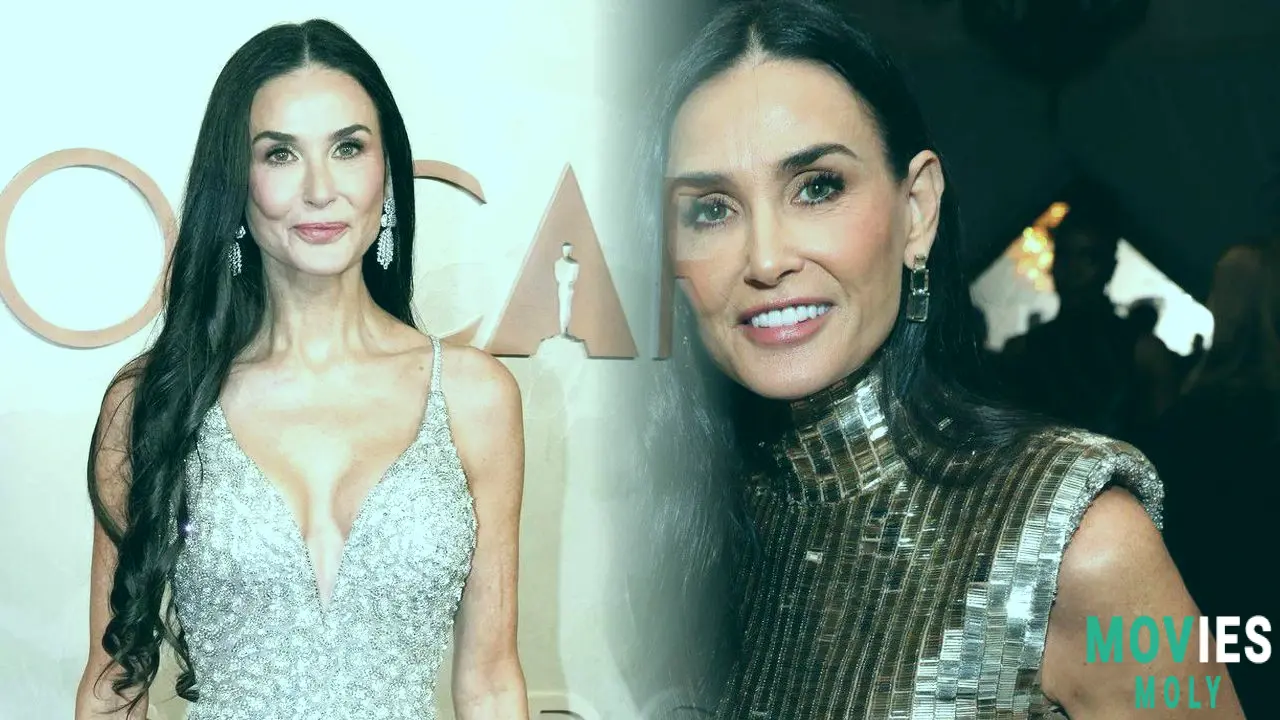There’s a particular kind of cinematic justice in Demi Moore’s recent awards season run — not the kind marked by golden statuettes, but by sheer cultural resonance. Despite walking away from the 2025 Oscars without the Best Actress trophy, Moore’s portrayal of Elisabeth Sparkle in The Substance has reignited her status not just as a Hollywood star, but as a pioneering force who continues to break through age, genre, and expectation. And like any iconic character from a Marvel or DC universe, Moore’s real-life arc is one of evolution, endurance, and ultimate empowerment.
The Oscar Loss That Didn’t Diminish Her Impact Or Momentum...And what a run it was. After snagging the top acting awards at the Golden Globes, SAGs, and Critics’ Choice, Moore was widely seen as the frontrunner for her work in Coralie Fargeat’s grotesque yet deeply emotional body-horror allegory. Still, the Academy chose Anora’s Mikey Madison — and not Moore — as Best Actress. But in a twist worthy of a comic book oracle, Moore knew it was coming.
“I leaned over and whispered to my manager, ‘I think it’s going to Mikey,’” Moore recalled in a recent Time interview. The moment of clarity left her not bitter, but grounded. “I didn’t feel gutted. I just trusted, and am in trust of, whatever is going to unfold.”
Her composure in that moment — and the genuine emotion behind it — says more than an Oscar win ever could. It’s the same kind of mature heroism that separates a fan-favorite from a legend. And Moore’s post-Oscars Instagram salute to Madison, full of genuine admiration, only cements her place as a player in this industry who doesn’t just compete, but uplifts.
From ’90s Brat Pack Star To Body-Horror Breakthrough Heroine

Moore’s journey through Hollywood is as layered as Elisabeth Sparkle’s descent into body image terror in The Substance. She broke onto the scene as part of the Brat Pack with St. Elmo’s Fire and About Last Night, giving voice to a generation of youth onscreen. By the mid-90s, she was commanding roles in Ghost, G.I. Jane, and Indecent Proposal, boldly negotiating for salaries that women hadn’t seen before—landing a $12.5 million payday for Striptease and becoming Hollywood’s highest-paid actress at the time.
Yet, despite her box-office clout, the media often mischaracterized her—coining the cruel nickname “Gimme Moore.” She calls that label “very hurtful” and acknowledges how it unfairly colored her career. But like any superhero who’s been underestimated, she kept pushing the envelope.
Her 1991 Vanity Fair cover, where she posed nude and pregnant, shattered societal norms. Her onscreen bikini moment in Charlie’s Angels: Full Throttle defied ageist expectations. She challenged the meaning of family itself on the red carpet by appearing with Bruce Willis, their daughters, and her then-younger boyfriend Ashton Kutcher.
Elisabeth Sparkle’s Horror Mirror Reflects Moore’s Real-Life Reclamation

The most talked-about scene in The Substance isn’t a gore-soaked climax—it’s a quiet, devastating moment in front of a mirror. Elisabeth tries to mask her aging skin with makeup, only to end up harming herself in a desperate bid to stay relevant, visible, desired. It’s a feminist horror metaphor straight out of Moore’s own playbook.
“What’s most damaging,” Moore says, “isn’t the shame that’s put on us, but when we let that shape how we see ourselves.” After decades of grappling with societal expectations around her body, image, and worth, Moore now turns that lens inward—with compassion and power. This is a woman who once pushed her body to extremes for roles, only to later realize she was also trying to control how she was perceived. Now, she’s unflinching.
“This is an incredibly powerful, exciting, and alive time,” she says about being in her 60s. And after watching her work in The Substance, it’s impossible not to believe her.
Not Just A Comeback—A Rebirth Into Roles She ChoSES, Not Just Accepts

Moore’s recent momentum isn’t about reclaiming youth—it's about claiming agency. She’s currently filming season two of Landman and stars in Boots Riley’s I Love Boosters, a sci-fi comedy where she plays a fashion mogul. Riley calls her a “rockstar” on set, someone who improvises and pushes boundaries just for the sake of the art. Sound familiar?
“She just picks cool things she wants to be involved in,” Riley says. That’s Demi Moore in 2025: free from the need to prove, and full of the desire to create. She even dreams of starring in an “irreverent, slightly absurd” action film with Michelle Yeoh. Sign us up.
Age May Take Lives, But It Gives Wisdom—and Demi Moore Is Living Proof

For years, Moore existed in the cultural background while Hollywood spoke louder through younger stars. Now, she’s not only back in the spotlight—she’s directing the conversation. Gwyneth Paltrow calls her “the first through the thicket,” the woman who got scratched so others wouldn’t have to. Jamie Lee Curtis compares her recognition to her own late-in-life Oscar win. They see what she is: a trailblazer still blazing.
Demi Moore didn’t just survive Hollywood—she evolved it. And like the best superheroes, she doesn’t need a mask or a cape to show she's powerful. She just needs a role, a mirror, and a moment to shine. The Substance was that moment. And it’s only the beginning.





